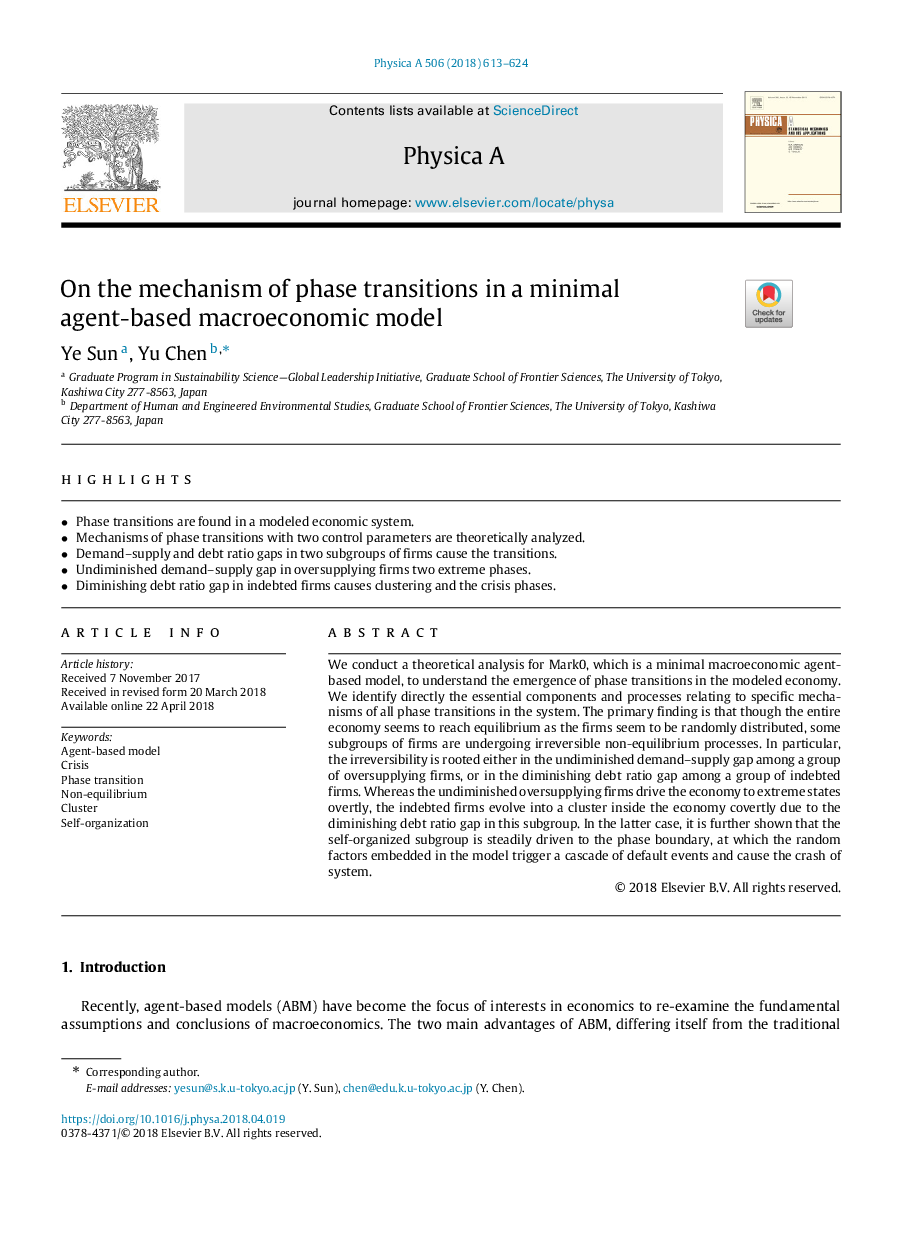| Article ID | Journal | Published Year | Pages | File Type |
|---|---|---|---|---|
| 7375140 | Physica A: Statistical Mechanics and its Applications | 2018 | 12 Pages |
Abstract
We conduct a theoretical analysis for Mark0, which is a minimal macroeconomic agent-based model, to understand the emergence of phase transitions in the modeled economy. We identify directly the essential components and processes relating to specific mechanisms of all phase transitions in the system. The primary finding is that though the entire economy seems to reach equilibrium as the firms seem to be randomly distributed, some subgroups of firms are undergoing irreversible non-equilibrium processes. In particular, the irreversibility is rooted either in the undiminished demand-supply gap among a group of oversupplying firms, or in the diminishing debt ratio gap among a group of indebted firms. Whereas the undiminished oversupplying firms drive the economy to extreme states overtly, the indebted firms evolve into a cluster inside the economy covertly due to the diminishing debt ratio gap in this subgroup. In the latter case, it is further shown that the self-organized subgroup is steadily driven to the phase boundary, at which the random factors embedded in the model trigger a cascade of default events and cause the crash of system.
Related Topics
Physical Sciences and Engineering
Mathematics
Mathematical Physics
Authors
Ye Sun, Yu Chen,
